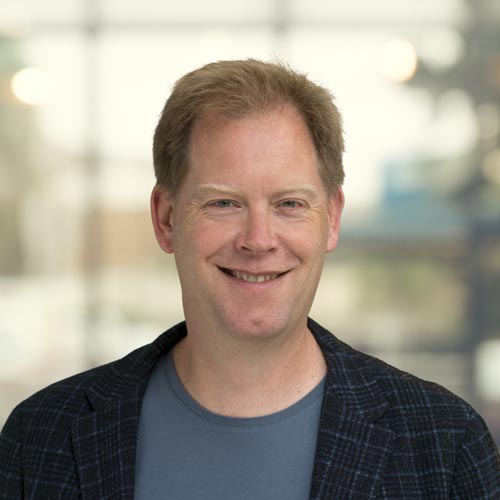
Martijn Schaap

Enkele van de grote klimaatuitdagingen van de 21e eeuw hebben te maken met de samenstelling van onze atmosfeer. Blootstelling aan vervuiling, zoals fijnstof, kan ernstige gezondheidsproblemen veroorzaken. Emissies van broeikasgassen veroorzaken klimaatverandering en de depositie van reactieve stikstofverbindingen leidt tot eutrofiëring, en daardoor tot een afname van de biodiversiteit in ecosystemen.
Onderzoeksgebied
Het lot en de impact van veel vervuilende stoffen zijn met elkaar verbonden door atmosferische processen. Deze complexe interacties vereisen een geïntegreerde aanpak om kosten-effectieve mitigatiemaatregelen te kunnen ontwikkelen.
Nu de kosten van mitigatiestrategieën blijven toenemen, is er steeds meer vraag naar hoogkwalitatieve informatie over blootstelling en afzetting, de oorsprong van vervuiling en de effectiviteit van mogelijke maatregelen. Wij ontwikkelen het LOTOS-EUROS chemie transport model voor luchtkwaliteitstoepassingen door te werken aan het modelleren van dynamische emissie, het verbeteren van procesbeschrijvingen, het omvatten van nieuwe functionaliteiten om de bron te achterhalen en omkering van uitstoot door satellietdata te gebruiken.
Belangrijkste publicaties
- Schaap, M., Apituley, A., Timmermans, R. M. A., Koelemeijer, R. B. A., and de Leeuw, G.: Exploring the relation between aerosol optical depth and PM2.5 at Cabauw, the Netherlands, Atmos. Chem. Phys., 9, 909–925, https://doi.org/10.5194/acp-9-909-2009, 2009
- Manders, P. Builtjes, L. Curier, L., ..., and M. Schaap, M., “Curriculum vitae of the LOTOS–EUROS (v2.0) chemistry transport model”, Geosci. Model Dev., 10, 4145–4173, https://doi.org/10.5194/gmd-10-4145-2017, 2017.
- Daellenbach, K. R., Uzu, G., Jiang, J., Cassagnes, L. E., Leni, Z., Vlachou, A., Schaap, M., … Prévôt, A. S. H. (2020). Sources of particulate-matter air pollution and its oxidative potential in Europe, Nature, 587 (7834), 414–419. https://doi.org/10.1038/s41586-020-2902-8
Utrecht - Princetonlaan
Princetonlaan 6
3584 CB Utrecht
Postadres
Postbus 80015
3508 TA Utrecht